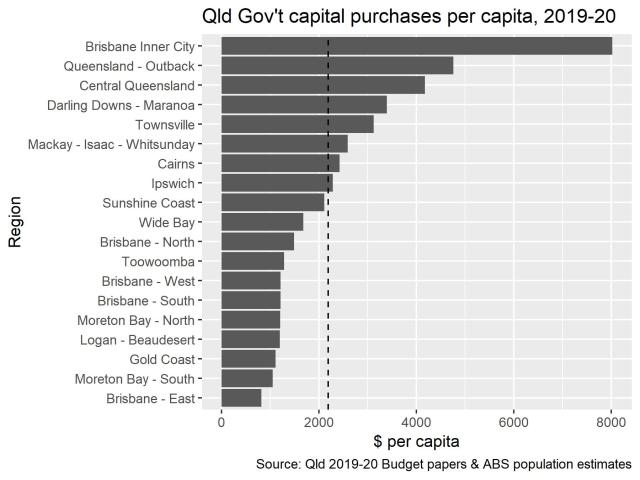Brisbane inner city workers and residents should start expecting some heavy construction activity around them soon as Cross River Rail capital expenditures are expected to amount to around $1.48 billion in 2019-20, according to the Capital Statement in the Queensland Government 2019-20 Budget Papers published last week. Cross River Rail means the Brisbane Inner City ABS Statistical Area level 4 (SA4) region has the highest level of Queensland Government capital purchases among SA4s (see chart below, noting the Cross River Rail Delivery Authority is part of the Treasury portfolio, presumably so Deputy Premier-Treasurer Jackie Trad can keep a close eye on it). Brisbane Inner City SA4 is also receiving the largest amount of capital works expenditures by the Education department, as the state government builds new (arguably unnecessary) inner city high schools (see my post Is the Dutton Park high-rise high school really necessary?).

The capital spending in Brisbane Inner City looks extremely disproportionate when considered in per capita terms (see chart below, noting the dotted line is the state-wide average).

Sure, Cross River Rail will benefit more people than just inner city residents, so to be fair I’ve aggregated the Brisbane SA4s into one Brisbane grouping (see figure below). This reduces the disparity a lot, but it would still annoy many regional Queenslanders to see Brisbane getting above average state government capital spending per capita as a result of Cross River Rail.

Given the state government’s political need to improve its standing in regional Queensland, some ministers may now be regretting such a high level of capital expenditures in Brisbane’s inner city.
For a handy summary of what’s in the latest Queensland Budget for business, see Nick Behrens’s post:

The budget paper you linked doesn’t go up to 139 pages. Is the graph derived from data from a different budget paper?
Hi Wilson, the document that link goes to has been changed by Queensland Treasury since I originally published the post. It now links to the 2020-21 capital statement. The page reference was correct for the 2019-20 budget paper. Thanks for letting me know about this. Please see my later post using the latest data:
The data used are from pages 101-102 of the latest capital statement.